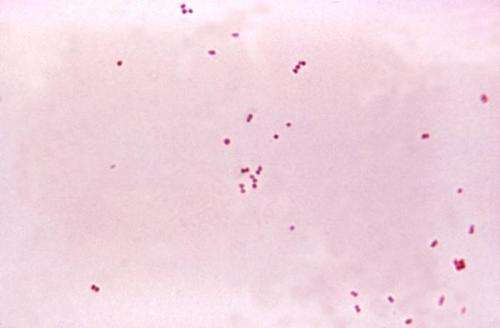
Researchers from Karolinska Institutet, Karolinska University Hospital, and The Wenner-Gren Institute at Stockholm University have conducted research within the field of bacterial meningitis and found how bacteria interact with neurons, causing neuronal cell death. The results of their study, which started in 2019, were recently published in PloS Pathogens.
We asked Federico Iovino, research group leader of the Iovino Laboratory at the Department of Neuroscience and corresponding author of the study, to elucidate some of the key points of the study.
“We believe this study represents an important step forward in the field of bacterial meningitis, a life-threatening inflammation of the meninges occurring as a consequence of a bacterial infection of the brain. A major issue of bacterial meningitis is the poor life quality post-disease; in fact, even if the bacterial infection in the brain is adequately cured, 50% of the survivors suffer from brain damages caused by the bacterial infection, such as cognitive and motor disabilities, hearing loss, or other neurological deficiencies.”
“The literature was lacking knowledge on the molecular mechanism underlying neuronal damage caused by bacterial infections of the brain. What we knew was essentially that neurons are killed or severely damage because of the infections, but we did not know how neuronal cell death was occurring. With this study, we have understood the mechanism used by Streptococcus pneumoniae, the main etiological cause of bacterial meningitis, to interact with neurons and cause neuronal cell death.”
Why is this important and how might your findings be put to use?
“We live in a time in which bacterial infections represent a serious burden. Even though we have access to antibiotics and vaccinations, bacterial infections still cause hundreds of thousands of deaths worldwide. Antibiotic-resistance is a constant threat to face in clinics”, says Federico Iovino.
“In addition, the brain is particularly difficult to treat from infections because drugs must penetrate the blood-brain barrier in order to enter the brain and eradicate the infections. The knowledge of how bacteria interact with neurons causing neuronal injury is particularly important because we can now develop novel therapeutic strategies to block bacterial-neuron interaction to protect neurons.”
How did you perform the study?
“This study started at the beginning of 2019, simply from a project proposal on a grant application. Only with the impressive dedication of my research group, and in particular of Mahebali Tabusi, first author and former researcher in my group, this study could be completed within two years of work”, explains Federico Iovino.
“In this study we showed that pneumococci use their proteins RrgA and pneumolysin (Ply) to interact with the β-actin exposed on neuronal plasma membrane, and through these interactions bacteria can invade neurons and cause neuronal cell death. Importantly, all data of this study were validated using human primary neurons, as in vitro model, and an experimental meningitis mouse in vivo model, and this significantly straightens the significance and importance of our results.”
What is the next step?
“Even though other eukaryotic cells die and are replaced, many neurons are never replaced when injured or after cell death. Therefore, it is crucial to protect the neurons from all damages that a bacterial infection can cause.”
Source: Read Full Article
